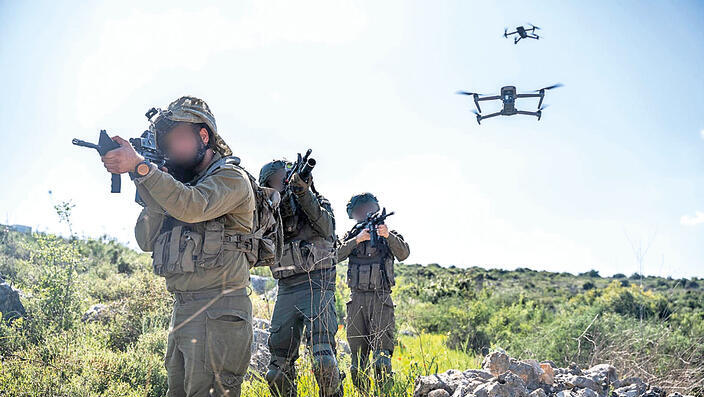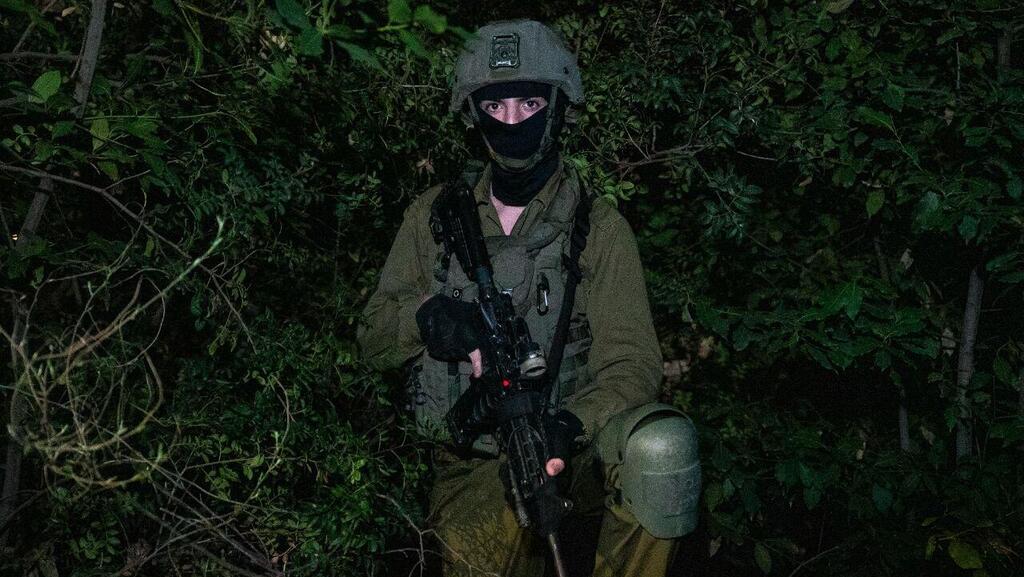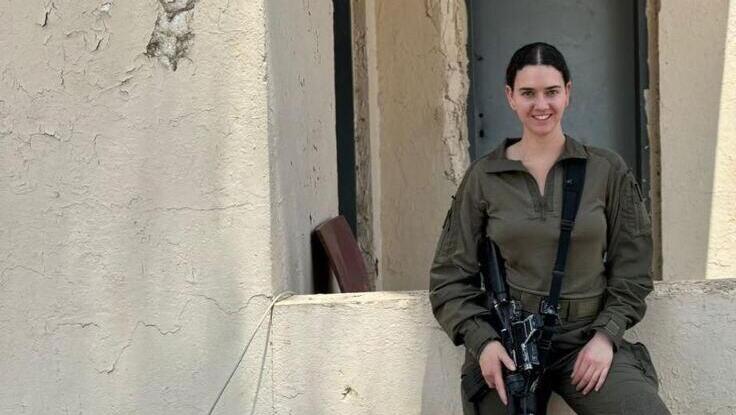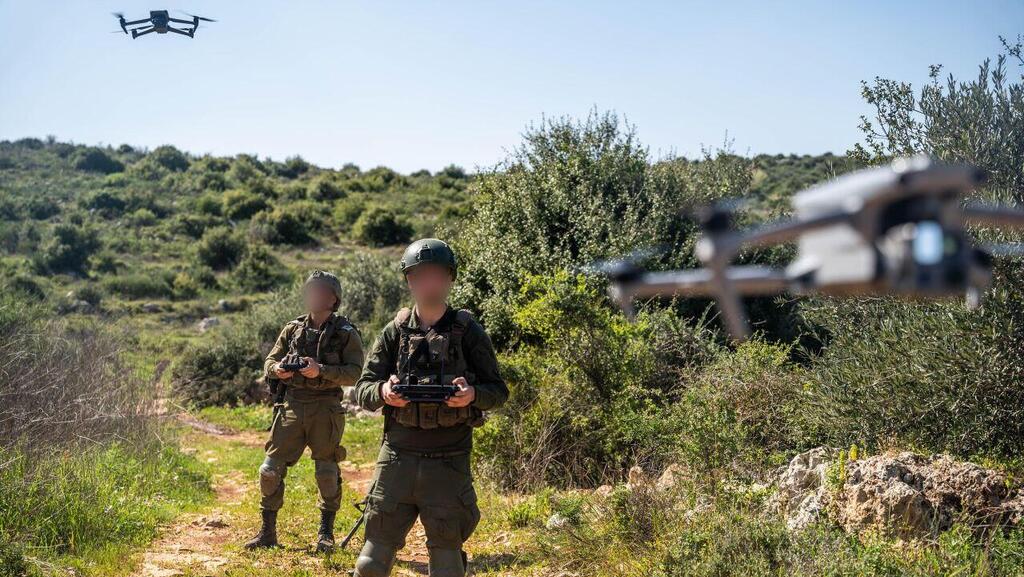Getting your Trinity Audio player ready...
They set up prolonged ambushes along the border contact line, use deception and tricks, prepare for ground operations on the other side, and attempt to strike with precision missiles.
Even though this is not enough to completely stop Hezbollah’s Shiite terror army – which was revealed to be stockpiling massive amounts of weapons at Beirut’s civilian airport – the IDF intelligence and strike forces operating on both sides of the Lebanese border have led the IDF to end this month with a double-digit number of successful terrorist eliminations.
In recent months, Major Meitar has become the commander of the only combat platoon in the IDF that operates as a frontline against Hezbollah. She and her troops from the 869th Intelligence Unit of the Galilee Division conduct advanced camouflage ambushes lasting more than 72 hours, some even extending up to two weeks, to expose and attack Hezbollah operatives along the border.
The young officer commands the drone platoon, which during the war integrates forces between horizontal aerial reconnaissance tools like drones and vertical ones like mast-mounted surveillance cameras – many of which were attacked and destroyed by Hezbollah, especially at the beginning of the war.
The objective is to immediately identify any movement in the dozens of Shiite villages, most of which have been abandoned since October 7, under the assumption that these are likely Hezbollah operatives.
Now, the intelligence unit is also preparing for another potential scenario: a possible ground maneuver in southern Lebanon if a full-scale war with Hezbollah breaks out
A few weeks before the war, we joined an ambush with the intelligence unit and revealed how Hezbollah had brought its elite forces down to the border fence, moving armed with little interference almost up to the old fence near Israeli settlements. At that time, the intelligence unit identified over 30 Hezbollah posts built opposite Israel to be attacked when the time came – and indeed, none of them have stood since October.
However, this was only the beginning of the work for the Galilee Division's unit: Around the clock the troops identify Hezbollah's hidden positions and operatives, just waiting for them to pop their heads up so they can launch various munitions at them.
These are slow maneuvers that require immense patience and often lead to frustration. Frequently, such surveillance confirms a Hezbollah target. Now, the intelligence unit is also preparing for another potential scenario: a possible ground maneuver in southern Lebanon if a full-scale war with Hezbollah breaks out.
"Our soldiers operate with determination and zeal. We are preparing ourselves for possible Hezbollah ground attacks, assuming one could start tomorrow morning. All these years of border preparations are now helping us greatly," says the divisional intelligence unit.
"The division’s strike cells, with which we close fire circles, are becoming more efficient week by week, and we are utilizing this period of friction to improve. Defensive combat is tough, unlike an offensive where you understand the blue arrow. Here, you need iron patience and the right tactical movement to avoid exposure and injury, thus preventing giving the enemy any gains."
Although it may seem that battles with Hezbollah occur daily along the border, this is not the case along the 135 kilometers from Rosh Hanikra to Mount Dov, where the unit operates. Most of the long ambushes, among thorny bushes and dense shrubs, with limited water and food in complex terrain, often end without firing a weapon or identifying an enemy.
However, the value of this grey-area intelligence collection is significant, allowing for a better understanding of Hezbollah’s tactics, as they currently operate in a more evasive manner. Intelligence soldiers observe how Hezbollah increasingly uses civilian vehicles for daily movements, hides in safe houses for field commanders, approaches UNIFIL positions and stays close to Lebanese Army posts.
The most challenging task is identifying if and when the moment will come when thousands of Hezbollah operatives still in southern Lebanon will initiate an assault on the border, despite the high alert and readiness of the Northern Command.
So far, several infiltration attempts by small Hezbollah cells have been identified and thwarted without prior intelligence, thanks to the vigilance of lookouts, intelligence forces and field soldiers who responded swiftly. Some of the intelligence unit's ambushes extend from 14 days to 20 days in the field.
"Hezbollah is also trying to gather information on us and expose us," added a member of Unit 869, commanded by Lt. Col. Roi Horowitz, whose family was evacuated from Kibbutz Gesher Haziv.
Major Meitar runs long exposure-attack ambushes with her soldiers in the field. Her primary mission, beyond eliminating Hezbollah operatives, is to continuously refine combat techniques against the terrorist army.
"We are literally searching for Hezbollah operatives day and night, and it's not easy because sometimes it means waiting weeks for something to happen or move," she explains. "Therefore, even when I am in the field with the soldiers and training them, we are constantly developing our methods and weaponry. Every day, the enemy here might act differently, and that requires us to adapt. So far, the forces have eliminated about 400 Hezbollah operatives, 100 of them led by our unit."






